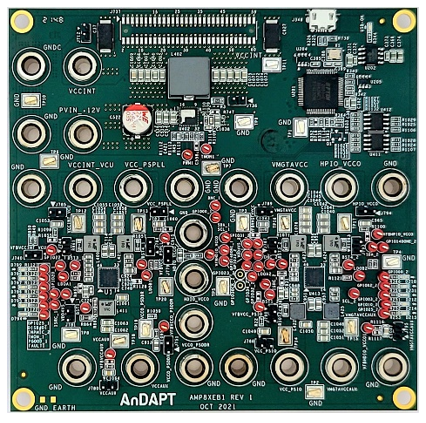Save board space and time to market as all FPGA power considerations are taken care of in a single chip! AnDAPT’s PMICs are a unique melding of analogue and digital technology, which together create a monolithic, programmable analogue-digital power solution for running an FPGA. A single FPGA may require many power rails to operate, so it is common that many ‘pieces of silicon’ are required to create and control these rails, a point of concern in the wake of semiconductor shortages. AnDAPT’s PMIC solves this issue as all analogue IP is taken care of within the device, lowering cost, consolidating the BOM, and optimising the power considerations for your chosen FPGA. The programmable nature of AnDAPT’s PMIC also means that there is no longer the need to rework your board when making small adjustments to your design. The digital side of the device allows for the integration of dissimilar power components and the ability to optimise and tune the device for your application requirement. Rail consolidation and sequencing is also taken care of.
AnDAPT’s WebAmP R.D. tool allows you to create these custom PMICs with ease. First, you select the company of FPGA you want at the core, Xilinx, for example, then you select which of their FPGAs you wish to use, followed by the use case, which may include options for cost, power, or performance optimisation, for example, and finally, the input voltage of the PMIC. You will then be given a preconfigured arrangement of peripherals which can be customised for your needs, within reason, down to the density of the analogue circuitry within the monolithic device. Whatever is required, AnDAPT will provide, including simulations and datasheets that show how your new design will behave! Such flexibility allows for rapid changes to be made with quick evaluation of the effects, accelerating time to market for tweaked designs as time-consuming analogue IP redesigns are no longer required!
The ARD_X_ZUM_C1, for example, is a power supply designed for Xilinx Zynq UltraScale+ (ZU+) MPSoC Performance-optimised FPGAs, serving up to 26 power-supply rails using 2 PMICs. The design is scalable to support the most basic ZU2CG device, with a dual-core ARM Cortex-53 application processor and dual-core ARM Cortex-R5F real-time processor, to ZU19EG products that have graphics processing capabilities, and more FPGAs in the family. The AmP8XEB1 evaluation board showcases the architectural flexibility, high efficiency, and cost effectiveness of the AmP8DB6QF65 PMIC in powering Xilinx’s devices and allows users to make changes to their evolving needs in minutes using AnDAPT’s WebAmP R.D. tool. Test data for all rails are available and meet Xilinx requirements for operating their devices.
Keep designing!
(Image sourced from AnDAPT)

